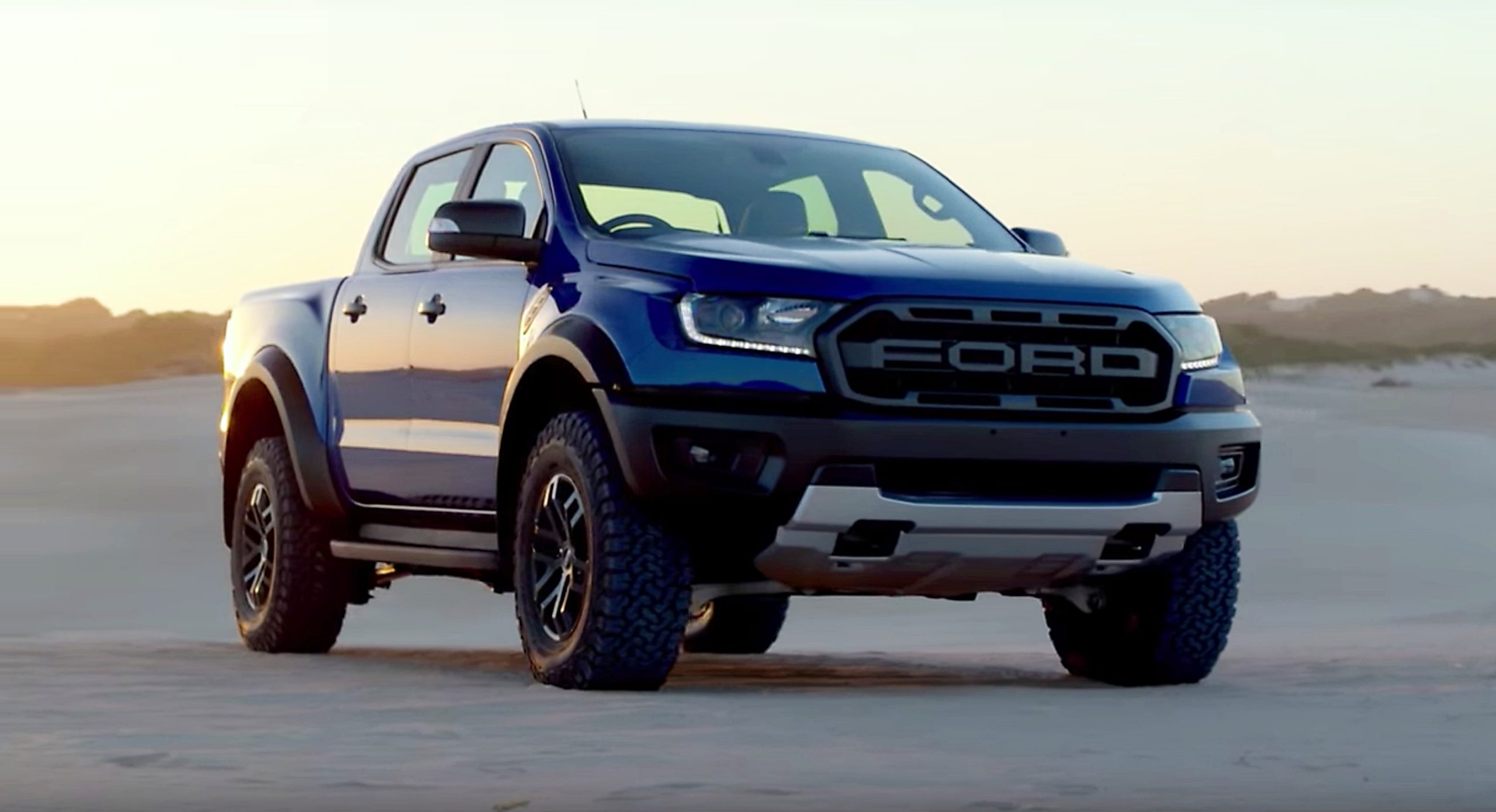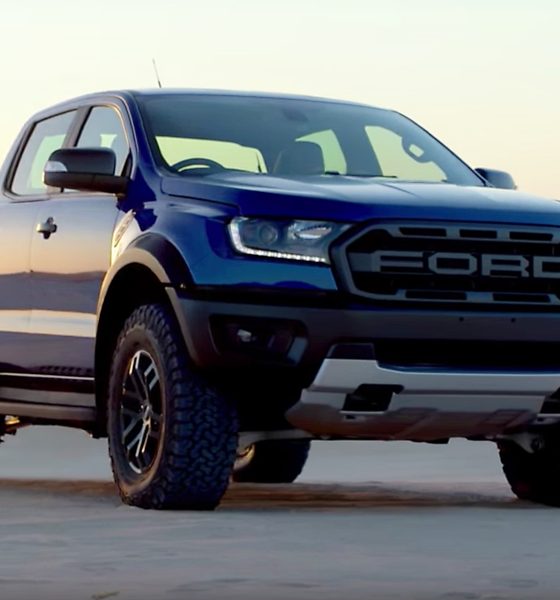

News
Ford CEO warns Elon Musk that Tesla is competing with the ‘ultimate disruptor’ in Henry Ford
Ford CEO Jim Hackett admits that the future of the automobile will be electric. Amidst this transition, the CEO noted that there will be disruptors that are bound to emerge. Yet, despite the arrival of these competitors, Hackett believes that Ford will ultimately have what it takes to maintain its place in the auto industry.
Poppy Harlow of CNN Business, who was interviewing the Ford CEO, mentioned how Tesla CEO Elon Musk remarked that the Detroit-based veteran carmaker will likely not make in the next recession. Responding to the interviewer, Hackett candidly noted that while he respects Musk as a competitor, Tesla will be facing a great challenge in Ford because the automaker is a disruptor itself.
“There’s a disruptor coming. I happen to compete with a rocket scientist who’s really smart, and I respect that about him. And yet, he’s competing with the ultimate disruptor in Henry Ford. When you go seven miles from here and you see the Rouge Complex, Henry bet the company, he goes bankrupt because there’s no industrial model in the world that has a hundred thousand people working in it. That one did, and [it] took 12 hours to build a vehicle before [Henry Ford] built it. It went down to 52 minutes. Today, we build an F-150 every 53 seconds,” Hackett stated.
Hackett’s statements harken back to what could very well be the most disruptive era of Ford’s history. Led by Henry Ford, the company opened its River Rouge factory in 1917, and it revolutionized the production of automobiles to such a degree that Henri Citroën, Louis Renault and Kiichiro Toyoda, the founder of Toyota, all visited the plant to study how Ford operated it.
Tesla, for its part, has exhibited great growth over its 16 years of operation. The automaker already sells more electric cars than any other car company on the market, but production-wise, Tesla’s factories are yet to achieve the same unanimous recognition as Henry Ford’s River Rouge facility. This, according to Hackett, is where Ford has a distinct advantage over Tesla. Thus, the CEO noted that he is not too worried about competition from the Silicon Valley-based electric car maker.
“So let’s go back to the challenges of the disruptor. How well does their production system work? How fast were they building cars? Which is saying that fitness, as we were saying, is a compendium of things that you have to get right. It’s not just the technology in this case. You have to have an industrial model. Ford’s really good at this,” Hackett said.
Apart from his statements about the competition rising from companies like Tesla, the Ford CEO stated that the Detroit-based automaker is fully committed to the transportation industry’s shift to autonomous vehicles. Hackett noted that he expects Ford to have fully autonomous cars ready by 2021, which will be ready for real-world testing without human drivers. Similar to Musk’s statements, the Ford CEO mentioned that the company’s self-driving initiatives will largely be dependent on regulators.
For now, and with upcoming vehicles such as the Tesla Pickup Truck preparing to enter its most profitable segment, Ford is busying itself on establishing strategic partnerships. Among these involve electric truck startup Rivian, which received a $500 million investment from Ford, and Volkswagen, whose partnership will allow the companies to come up with two new electric vehicles for the European market. Ford has also invested $1 billion in Argo, a company that develops autonomous driving technology.
Watch an excerpt from the Ford CEO’s interview with CNN Business in the video below.

News
Tesla is seeing a lot of momentum from young Koreans in their 20s-30s: report
From January to November, young buyers purchased over 21,000 Teslas, putting it far ahead of fellow imported rivals like BMW and Mercedes-Benz.

Tesla has captured the hearts of South Korea’s 20s-30s demographic, emerging as the group’s top-selling imported car brand in 2025. From January to November, young buyers purchased over 21,000 Teslas, putting it far ahead of fellow imported rivals like BMW and Mercedes-Benz.
Industry experts cited by The Economist attributed this “Tesla frenzy” to fandom culture, where buyers prioritize the brand over traditional car attributes, similar to snapping up the latest iPhone.
Model Y dominates among young buyers
Data from the Korea Imported Automobile Association showed that Tesla sold 21,757 vehicles to the 20s-30s demographic through November, compared to BMW’s 13,666 and Mercedes-Benz’s 6,983. The Model Y led the list overwhelmingly, with variants like the standard and Long Range models topping purchases for both young men and women.
Young men bought around 16,000 Teslas, mostly Model Y (over 15,000 units), followed by Model 3. Young women followed a similar pattern, favoring Model Y (3,888 units) and Model 3 (1,083 units). The Cybertruck saw minimal sales in this group.
The Model Y’s appeal lies in its family-friendly SUV design, 400-500 km range, quick acceleration, and spacious cargo, which is ideal for commuting and leisure. The Model 3, on the other hand, serves as an accessible entry point with lower pricing, which is valuable considering the country’s EV subsidies.
The Tesla boom
Experts described Tesla’s popularity as “fandom culture,” where young buyers embrace the brand despite criticisms from skeptics. Professor Lee Ho-geun called Tesla a “typical early adopter brand,” comparing purchases to iPhones.
Professor Kim Pil-soo noted that young people view Tesla more as a gadget than a car, and they are likely drawn by marketing, subsidies, and perceived value. They also tend to overlook news of numerous recalls, which are mostly over-the-air software updates, and controversies tied to the company.
Tesla’s position as Korea’s top import for 2025 seems secured. As noted by the publication, Tesla’s December sales figures have not been reported yet, but market analysts have suggested that Tesla has all but secured the top spot among the country’s imported cars this year.
News
Tesla FSD fleet is nearing 7 billion total miles, including 2.5 billion city miles
As can be seen on Tesla’s official FSD webpage, vehicles equipped with the system have now navigated over 6.99 billion miles.

Tesla’s Full Self-Driving (Supervised) fleet is closing in on almost 7 billion total miles driven, as per data posted by the company on its official FSD webpage.
These figures hint at the massive scale of data fueling Tesla’s rapid FSD improvements, which have been quite notable as of late.
FSD mileage milestones
As can be seen on Tesla’s official FSD webpage, vehicles equipped with the system have now navigated over 6.99 billion miles. Tesla owner and avid FSD tester Whole Mars Catalog also shared a screenshot indicating that from the nearly 7 billion miles traveled by the FSD fleet, more than 2.5 billion miles were driven inside cities.
City miles are particularly valuable for complex urban scenarios like unprotected turns, pedestrian interactions, and traffic lights. This is also the difference-maker for FSD, as only complex solutions, such as Waymo’s self-driving taxis, operate similarly on inner-city streets. And even then, incidents such as the San Francisco blackouts have proven challenging for sensor-rich vehicles like Waymos.
Tesla’s data edge
Tesla has a number of advantages in the autonomous vehicle sector, one of which is the size of its fleet and the number of vehicles training FSD on real-world roads. Tesla’s nearly 7 billion FSD miles then allow the company to roll out updates that make its vehicles behave like they are being driven by experienced drivers, even if they are operating on their own.
So notable are Tesla’s improvements to FSD that NVIDIA Director of Robotics Jim Fan, after experiencing FSD v14, noted that the system is the first AI that passes what he described as a “Physical Turing Test.”
“Despite knowing exactly how robot learning works, I still find it magical watching the steering wheel turn by itself. First it feels surreal, next it becomes routine. Then, like the smartphone, taking it away actively hurts. This is how humanity gets rewired and glued to god-like technologies,” Fan wrote in a post on X.
News
Tesla starts showing how FSD will change lives in Europe
Local officials tested the system on narrow country roads and were impressed by FSD’s smooth, human-like driving, with some calling the service a game-changer for everyday life in areas that are far from urban centers.

Tesla has launched Europe’s first public shuttle service using Full Self-Driving (Supervised) in the rural Eifelkreis Bitburg-Prüm region of Germany, demonstrating how the technology can restore independence and mobility for people who struggle with limited transport options.
Local officials tested the system on narrow country roads and were impressed by FSD’s smooth, human-like driving, with some calling the service a game-changer for everyday life in areas that are far from urban centers.
Officials see real impact on rural residents
Arzfeld Mayor Johannes Kuhl and District Administrator Andreas Kruppert personally tested the Tesla shuttle service. This allowed them to see just how well FSD navigated winding lanes and rural roads confidently. Kruppert said, “Autonomous driving sounds like science fiction to many, but we simply see here that it works totally well in rural regions too.” Kuhl, for his part, also noted that FSD “feels like a very experienced driver.”
The pilot complements the area’s “Citizen Bus” program, which provides on-demand rides for elderly residents who can no longer drive themselves. Tesla Europe shared a video of a demonstration of the service, highlighting how FSD gives people their freedom back, even in places where public transport is not as prevalent.
What the Ministry for Economic Affairs and Transport says
Rhineland-Palatinate’s Minister Daniela Schmitt supported the project, praising the collaboration that made this “first of its kind in Europe” possible. As per the ministry, the rural rollout for the service shows FSD’s potential beyond major cities, and it delivers tangible benefits like grocery runs, doctor visits, and social connections for isolated residents.
“Reliable and flexible mobility is especially vital in rural areas. With the launch of a shuttle service using self-driving vehicles (FSD supervised) by Tesla in the Eifelkreis Bitburg-Prüm, an innovative pilot project is now getting underway that complements local community bus services. It is the first project of its kind in Europe.
“The result is a real gain for rural mobility: greater accessibility, more flexibility and tangible benefits for everyday life. A strong signal for innovation, cooperation and future-oriented mobility beyond urban centers,” the ministry wrote in a LinkedIn post.








